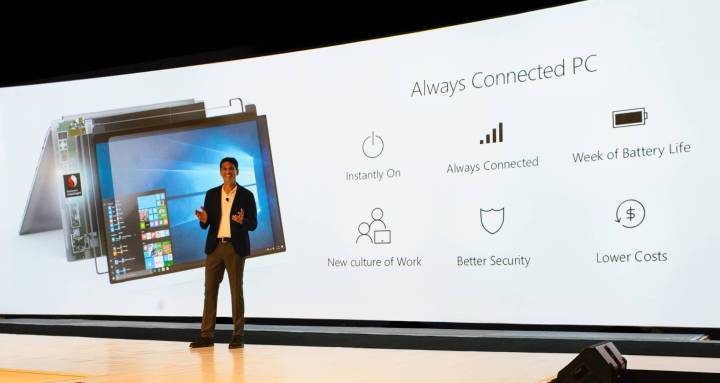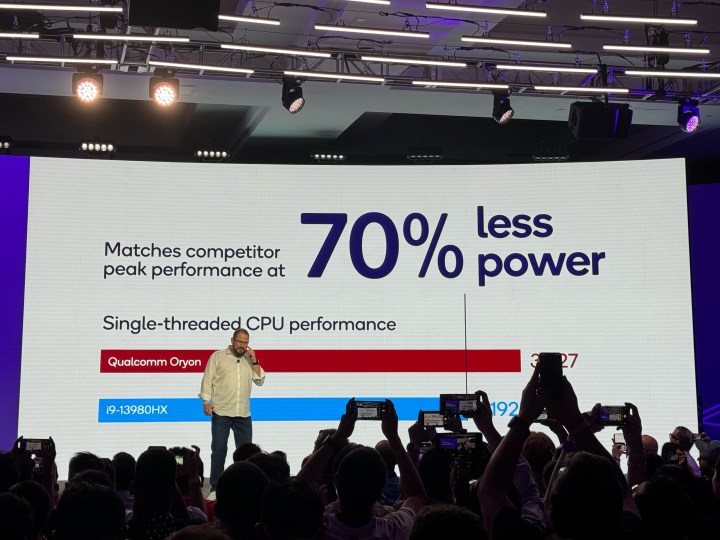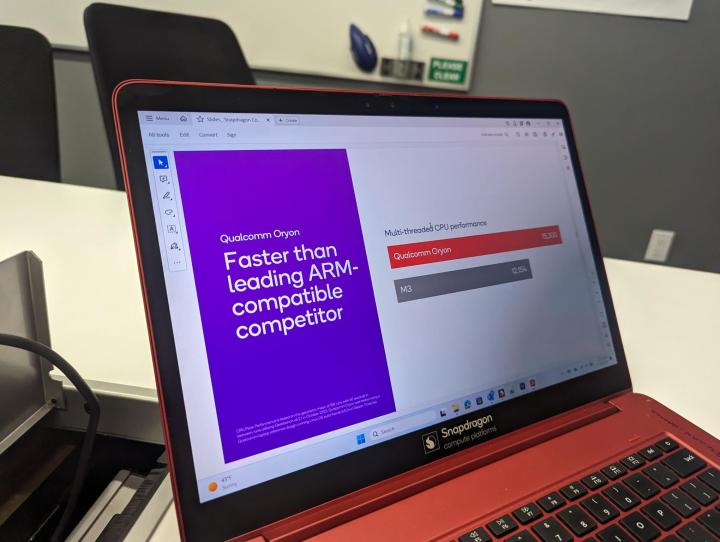
MacBooks have dominated the laptop landscape over the past few years.
As good as Windows laptops are, they just haven’t been able to compete with MacBooks in terms of efficiency or performance-per-watt. It’s what allows modern MacBooks to be thinner, quieter, and longer-lasting, without losing performance. They’re so efficient that you don’t even lose performance when on battery.
Coming into 2024, I was excited about Windows laptops fighting back, especially with the adoption of Qualcomm’s new Snapdragon X Elite chips. But due to some recent developments, I’m beginning to worry about about just how successful this transition can really be.
Sky-high ambitions

I’ve been cheering for Qualcomm PCs for many years, and in the early days, it required a lot of faith. The company has been attempting to kick-start a transition of Windows laptops to ARM since 2017, with Microsoft even announcing a new brand of Always Connected PCs. Powered by a Qualcomm Snapdragon chip and an ARM version of Windows 10, these devices were marketed on longer battery life and LTE connectivity. I wanted to believe that this could be the future of Windows devices — the proposition was certainly attractive.
But due to poor performance and limited software compatibility, laptops manufacturers were hesitant to embrace the change. That meant a very limited selection and expensive prices.
Qualcomm was quick to argue that this was only the beginning, but the situation wasn’t improving with time. The failures came to a head with the Surface Pro X in 2019. It should have been a pivot point for the entire ecosystem. Finally, here was a flagship device by Microsoft itself that could show the true benefits of ARM. Instead, it proved just the opposite, as it was still plagued by all of the same problems that existed from the very beginning.
To make things worse, it was only a year later that Apple would announce and begin its own transition to ARM. The contrast in execution couldn’t have been more stark.

But late last year, rumblings of a revolution were beginning. Qualcomm announced the Snapdragon X Elite chips, claiming not only a leap in performance over Intel and AMD — but even Apple itself. When announced, these chips were said to have twice the CPU performance over the Intel Core i7-1360P while consuming 68% less power. On the other hand, they were said to have achieved 50% faster multi-threaded performance over the Apple M2 (21% faster than the M3). Finally, it was sounding like Qualcomm may have finally made the leap I’d always been waiting for.
I wasn’t the only one convinced either. Every major laptop manufacturer is on board, including many that had never attempted an ARM laptop in the past. These new chips were poised to finally make a transition to ARM that could rival what Apple pulled off with its MacBooks.
Unfortunately, some recent leaks have shown the situation isn’t quite as promising as I’d hoped.
The doubts creep in

Skeptics of this whole transition have been justified to want to wait until we can test these chips ourselves. After all, Qualcomm has always talked a big game when it comes to performance. One of our first glimpses of real testing was leaked from Geekbench 6, where the 12-core variant of the Snapdragon X Elite system scored 2574 in single-core and 12562 in multi-core.
In the grand scheme of things, these are fantastic scores and a real treat to see. These results easily outscore the latest laptops in the Intel camp, such as the Dell XPS 14 with the Intel Core Ultra 7 165H. Unfortunately, its comparison against the MacBook Air and the M3 isn’t quite as dominant as had been promised. As tested on a 13-inch MacBook Air with an 8-core CPU and 10-core GPU, I got Geekbench 6 scores of 3102 for single-core and 12078 for multi-core. Comparing the scores, the Qualcomm system had a 4% advantage over the MacBook Air in multi-core, while the Air had a 17% advantage in single-core.
As impressive as it is that this Qualcomm system has beaten the M3 in multi-core, 4% is significantly behind the promised 21%. How this all plays out on final devices in real-life performance is yet to be seen, of course. We have gotten one other sneak peek of performance on these Qualcomm systems in terms of its gaming capabilities. The company has made some significant claims about how games will “just work” and don’t need to be ported over by developers — and that was demonstrated by a recent video posted on Twitter of its gaming capabilities.
Here's a demo of Baulders Gate 3 running at 1080p hovering around 30FPS, which is perfectly playable! https://t.co/ZieiHtzRlN pic.twitter.com/VvFKbUVK5J
— Devin Arthur (@Lexcyn) March 25, 2024
The video shows Baldur’s Gate 3 running at 1080p with what looks like an average frame rate of around 30 frames per second (fps). Again, this is a good sign. It’s certainly not something that you’ll be able to easily do with even the latest Intel integrated graphics. This isn’t, however, on the level of the M3 MacBook Air.
To be clear, I’m not even talking about the brilliance of the MacBook Pro M3 Max, which can play Baldur’s Gate 3 beautifully. But even on the M3 MacBook Air, I was able to get 45 fps or 50 fps, which is significantly smoother. There’s a lot we don’t know in this case, especially about the graphics settings, but it certainly seems like the M3 is going to outperform the Snapdragon X Elite in GPU performance.
Now, I know what you’re thinking. Even if the Snapdragon chip doesn’t quite run circles around the MacBook Air as I’d hoped, it’s still really impressive right? That’s certainly true. But all of these comparisons are being made without knowing tyhe specifics of other important considerations, such as chassis size, efficiency, battery life, and most importantly, price. Will these first Qualcomm laptops really start at just $1,099? We really don’t know yet, but it leaves me wondering how well these laptops will compare to MacBooks, apples to apples.
A long road ahead

Don’t get me wrong — I’m still very much rooting for these laptops. If we can get proper rivals to go toe-to-toe with MacBooks, that will turn up the pressure on Apple. That’s better for all of us, including MacBook fans. But I’m no longer expecting this first wave of laptops to necessarily accomplish that on their own.
Hopefully, they will at least prove there is a viable path here for Windows laptops, and further improvements in the years to come will build a strong foundation for the future.
We also know that Qualcomm’s exclusivity with Windows on ARM terminates at the end of 2024. Early reports have indicated that companies like Nvidia and AMD are already interested in getting in on the fun — and again, that could come as early as next year. With this much competition, we may be in for a true revolution for Windows laptops that will unfold over the next couple of years. Looking back, I’m sure we’ll see that journey beginning in a meaningful way this year, but there’s a long road ahead if they hope to beat Apple at its own game.


